I was fortunate to join Senior Lieutenant General Vo Van Tuan, former Deputy Chief of the General Staff of the Vietnam People's Army, at Thanh Son-Phan Rang airport to attend the event of the Quyet Thang Squadron revisiting the old battlefield, exchanging and continuing the tradition for the young pilots. It was at this airport that 48 years ago they took off, flew straight into Tan Son Nhat airport, successfully completed the mission and the whole squadron returned and landed safely.
The fatal, unexpected, spectacular attack on the nerve center of the Saigon government at the end of the Ho Chi Minh campaign destroyed 24 planes and destroyed many enemy forces, causing them to collapse, from confusion to panic; contributing to accelerating the collapse of the Saigon regime. It can be said that this is one of the historical feats of the Vietnamese air force in the historic victory of April 30, 1975, unifying the country.
Just over 3 days to learn to fly the A-37
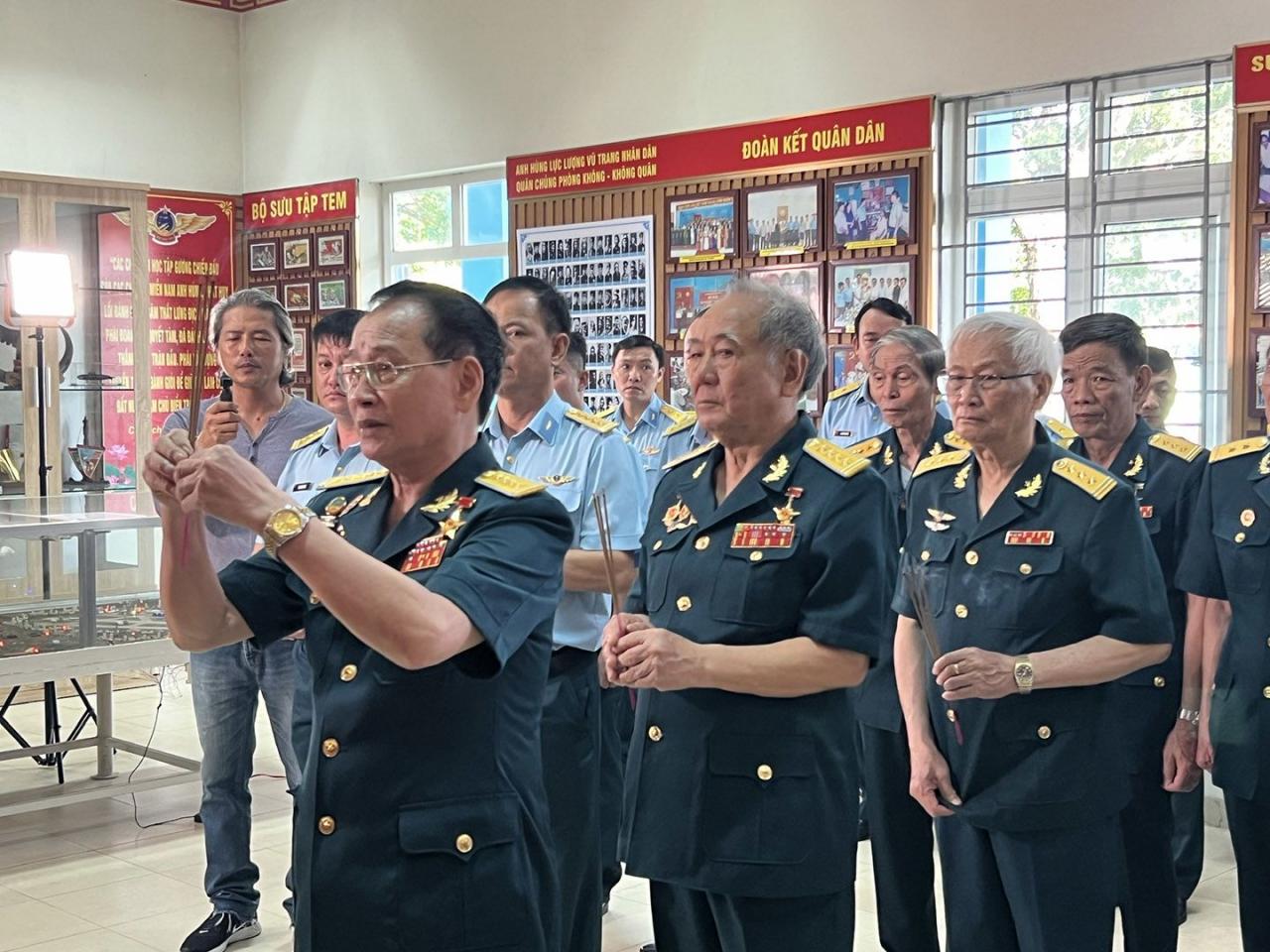
The Quyet Thang Squadron offered incense to commemorate the heroic martyrs of Regiment 937.
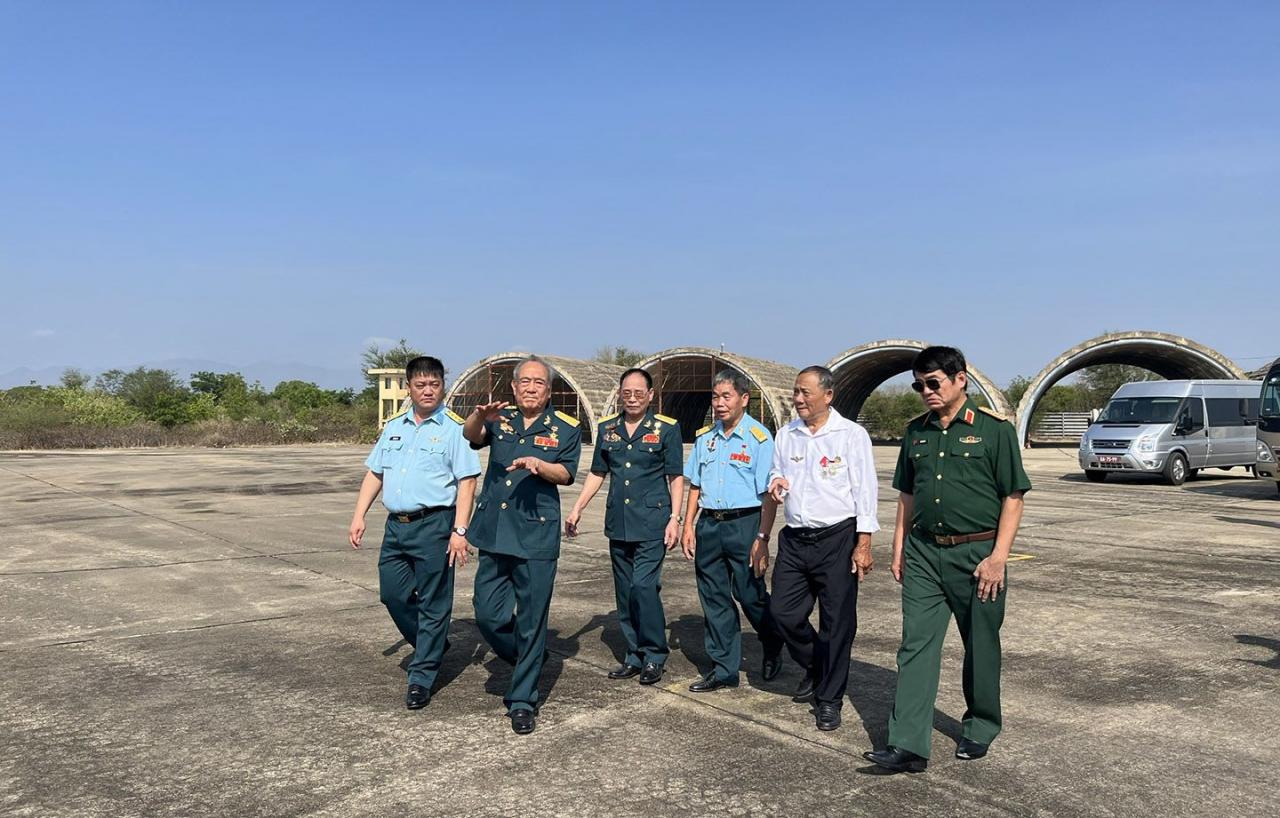
Pilots of the Victory Squadron at the aircraft assembly point before takeoff.
On April 28, 2023, the weather in Phan Rang was sunny and beautiful. As the sun rose, the pilots of the Quyết Thắng Squadron, along with historical witnesses and officers and soldiers of the 937th Air Force Regiment of the 370th Division, were present at the Regiment's Traditional House to hold an incense offering ceremony.
The 937th Air Force Regiment, which is managing Thanh Son Airport, is a regiment with a rich tradition, established less than a month after the country's reunification (May 21, 1975), has won many outstanding achievements, and was awarded the title of Hero of the People's Armed Forces in 1981. Up to this point, there have been six generals of our army who have grown up from the regiment, such as Senior Lieutenant General Vo Van Tuan, Lieutenant General Nguyen Kim Cach, Lieutenant General Lam Quang Dai...
The Quyết Thắng Squadron consisted of 6 pilots, but the reunion after 48 years at the “old battlefield” had only 3 participants: Squadron Leader, Colonel Nguyen Van Luc, Colonel Han Van Quang (both of whom are Heroes of the People’s Armed Forces) and Mr. Tran Van On (a pilot in exile from the old regime). After the war against the US, Mr. Hoang Mai Vuong sacrificed his life during a mission, Mr. Nguyen Thanh Trung was unable to attend due to health reasons and Mr. Tu De was busy with work.
Standing in front of the documentary photos in the traditional house, the former pilots of the Victory Squadron could not contain their emotions. Colonel Nguyen Van Luc was moved: “This battle had so much collective effort, from the strategic vision and resolute direction of the General Command, to the navigators, mechanics, technicians preparing the aircraft, installing bombs…, so that we could directly drop bombs on the enemy and return victorious.”
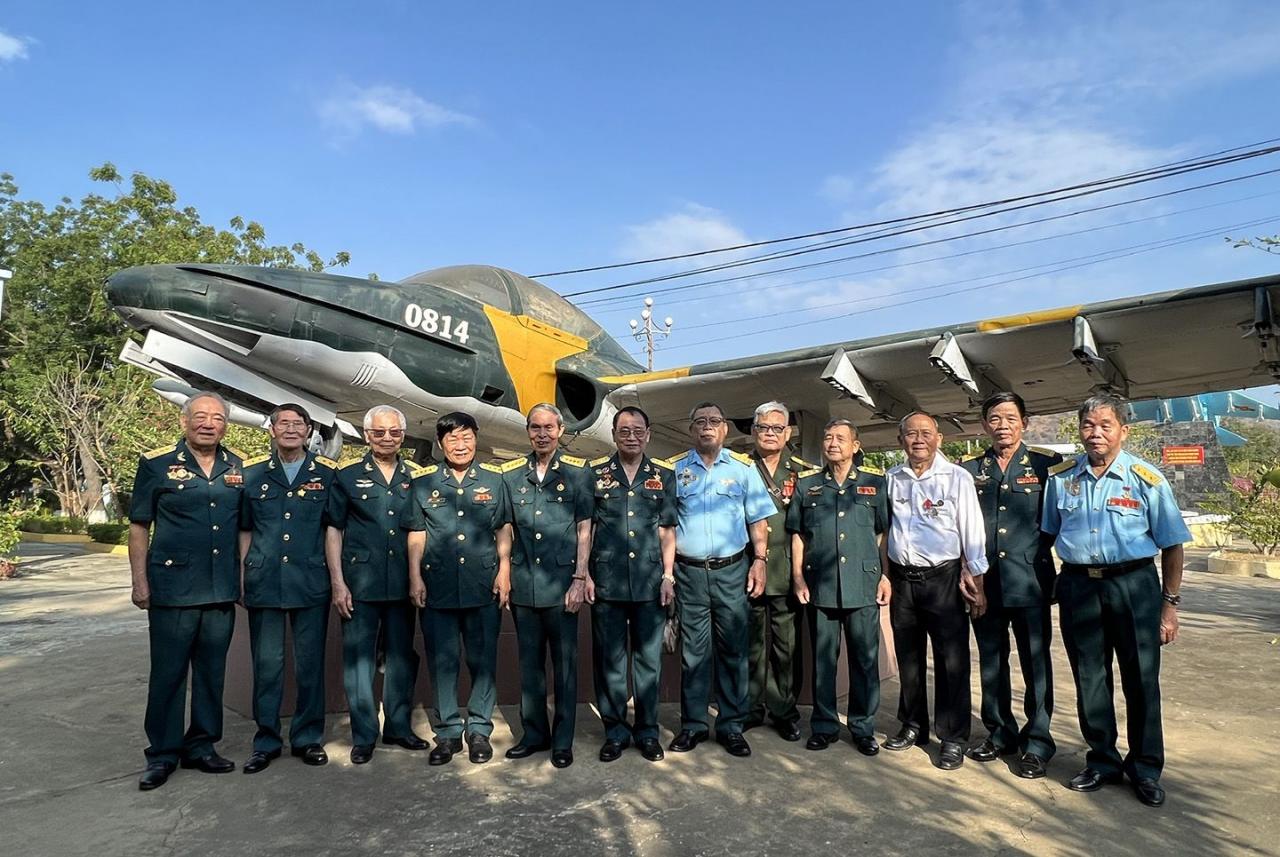
Members of the Quyết Thắng Squadron and those who served with the squadron during the battle of Tan Son Nhat.
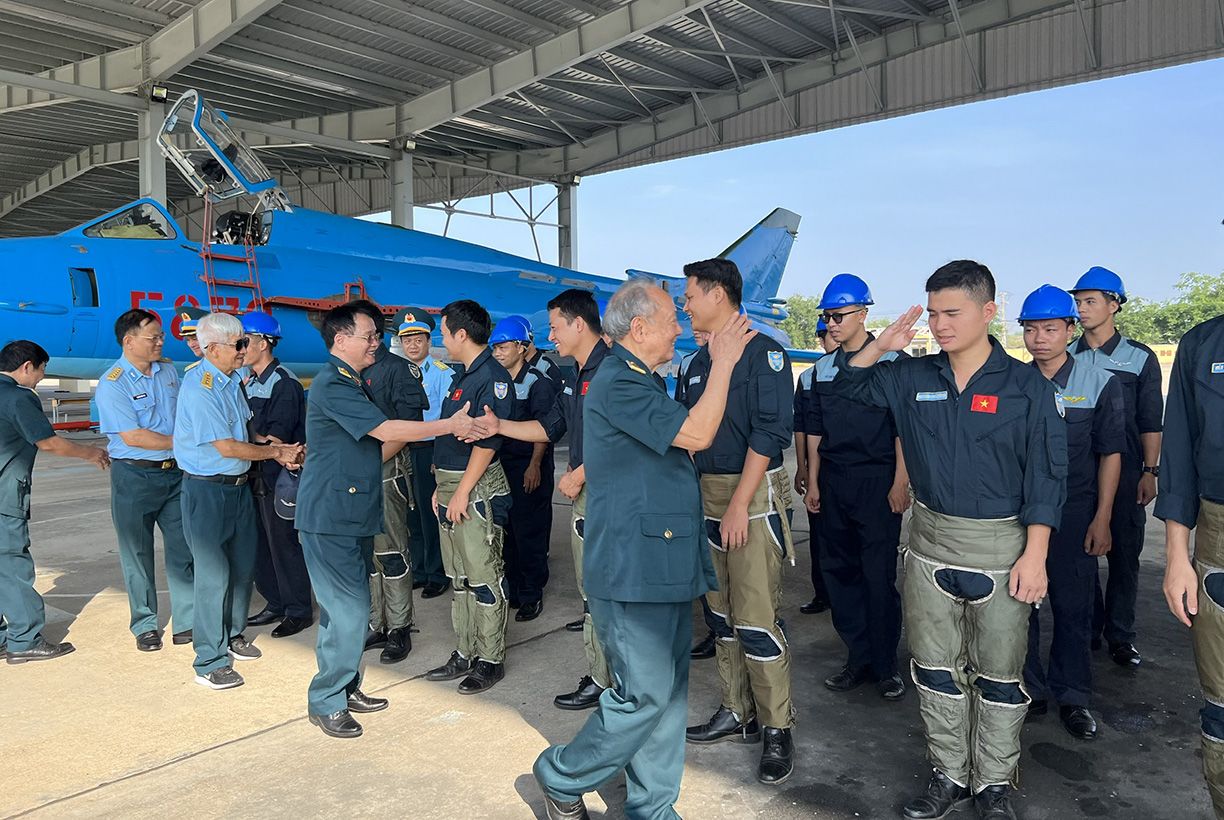
Members of the Quyet Thang Squadron visited and encouraged young pilots on combat duty.
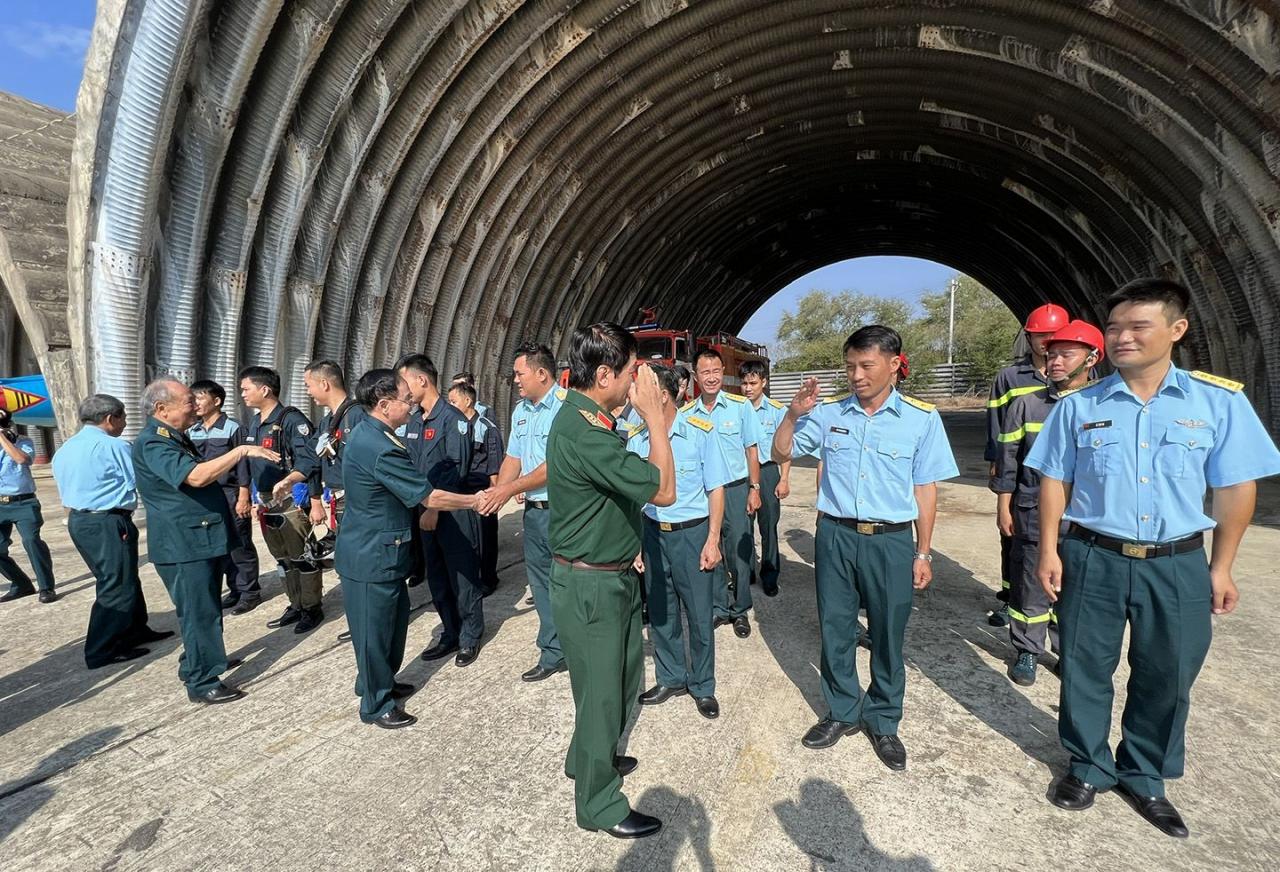
Visit the pilots on duty at Thanh Son-Phan Rang airport.
Members of the Quyết Thắng Squadron next to an A-37 aircraft, the type used to bomb Tan Son Nhat.
"Later, when American pilots visited Vietnam and interacted with us, they still couldn't believe that with just that amount of time studying, we could fly and fight! They said we were bragging!"
Hero of the People's Armed Forces Han Van Quang
Thanh Son Airport, where the Squadron took off, is considered our largest military airport today with a perimeter of up to 24km. From the barracks gate to the regimental headquarters is more than 5km. Now the facilities are spacious and modern, but before the trees grew like a forest, it was the habitat of rabbits, deer, leopards...
After visiting the A-37 aircraft, the type that had once served them in battle, the former pilots moved to the airport area. Many young pilots of the Regiment lined up next to the SU-22 aircraft, eagerly welcoming their “seniors”. Colonel Han Van Quang smiled and said: “At this time, that is, around 10 o’clock that day (April 28, 1975), we moved from Phu Cat airport (Quy Nhon) to Phan Rang. The squadron consisted of 5 A-37s, but only 4 entered first (I was in this group); On and Vuong’s aircraft had technical problems that had to be fixed, so they entered later”.
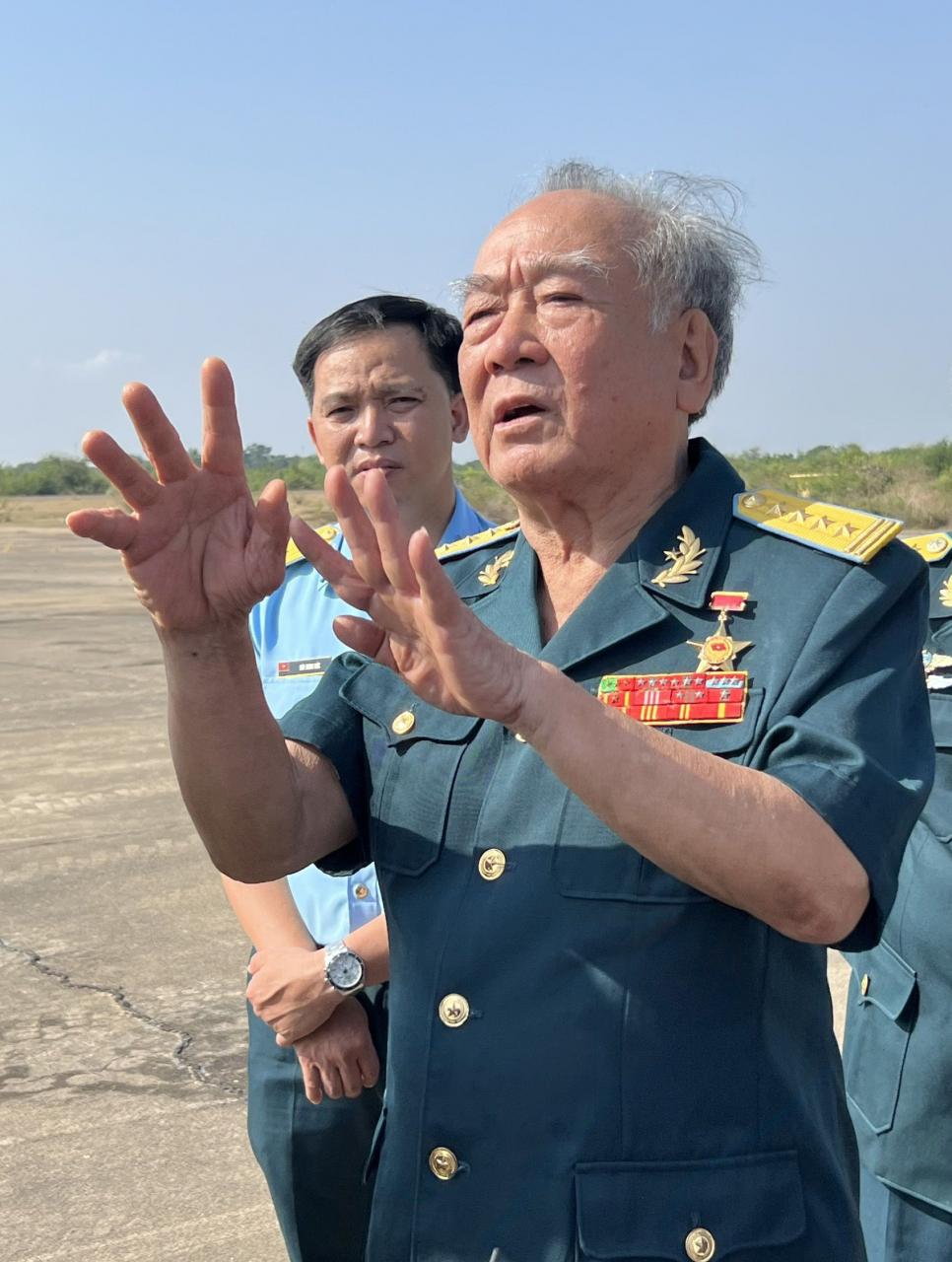
Colonel Han Van Quang shares his feelings.
Colonel Nguyen Van Luc recounted: “Our time to learn to fly an airplane was only 3 and a half days (from the afternoon of April 22 to the end of April 24, 1975). The instructors were Tran Van On and another pilot. Previously, we had learned to fly Russian planes, this was the first time we had flown an American plane. Difficulties piled up. The average time to change to a new type of aircraft was 3 to 6 months (depending on the type and requirements), but we only had more than 3 days! In Da Nang at that time, there was only one A-37 for us to learn, we took turns flying, each person only flew 2-3 flights. The total flight time for each person was less than an hour and a half, so it can be said that this was the shortest flight time to change to a new type in military history!”
Mr. Quang interjected: “Later, when American pilots visited Vietnam and interacted with us, they still couldn’t believe that with just that amount of time studying, we could fly and fight! They said we were bragging!”
Among the three pilots of the Quyết Thắng Squadron, Mr. Tran Van On was the most reserved. After the country was reunified, he served in the Air Force for two more years before being discharged. His life was quite difficult, but in return, he received the sharing and sincere help of the Squadron members. He praised: “Participating in training for only a short time, I saw that the pilots in the North learned very quickly. The most important thing is still recognizing the clock, taking off and landing, but once you can fly in the sky, it is not difficult!”
Fight but leave room for the enemy to run.
Colonel Nguyen Van Luc shares his feelings.
Mr. Luc continued: “At 2:00 p.m., at Thanh Son airport, Air Defense-Air Force Commander Le Van Tri met with the entire squadron and assigned the mission of bombing Tan Son Nhat airport. Before that, the superiors gave the squadron 6 targets in Saigon to choose from: the US Embassy, Independence Palace, Police Headquarters, General Staff, Nha Be Fuel Depot and Tan Son Nhat airport.
We realized that the flight training time was short, the flight path was not yet familiar, there was no radio communication, no navigation, and we had to carry out the mission according to the four words "self": go by ourselves, find by ourselves, fight by ourselves, and return by ourselves. Therefore, we suggested choosing Tan Son Nhat because this target was large, easy to detect from afar, and easier to hit by bombing, and we would blend into the enemy's flight path, making it difficult for them to detect.
The Squadron's proposal was approved by the superiors. Commander of the Air Defense - Air Force Le Van Tri directly assigned the following tasks: First, only attack the taxiways and areas with enemy aircraft, not the runways. Second, ensure absolute safety for our contingent at Davis camp, located southwest of Tan Son Nhat.
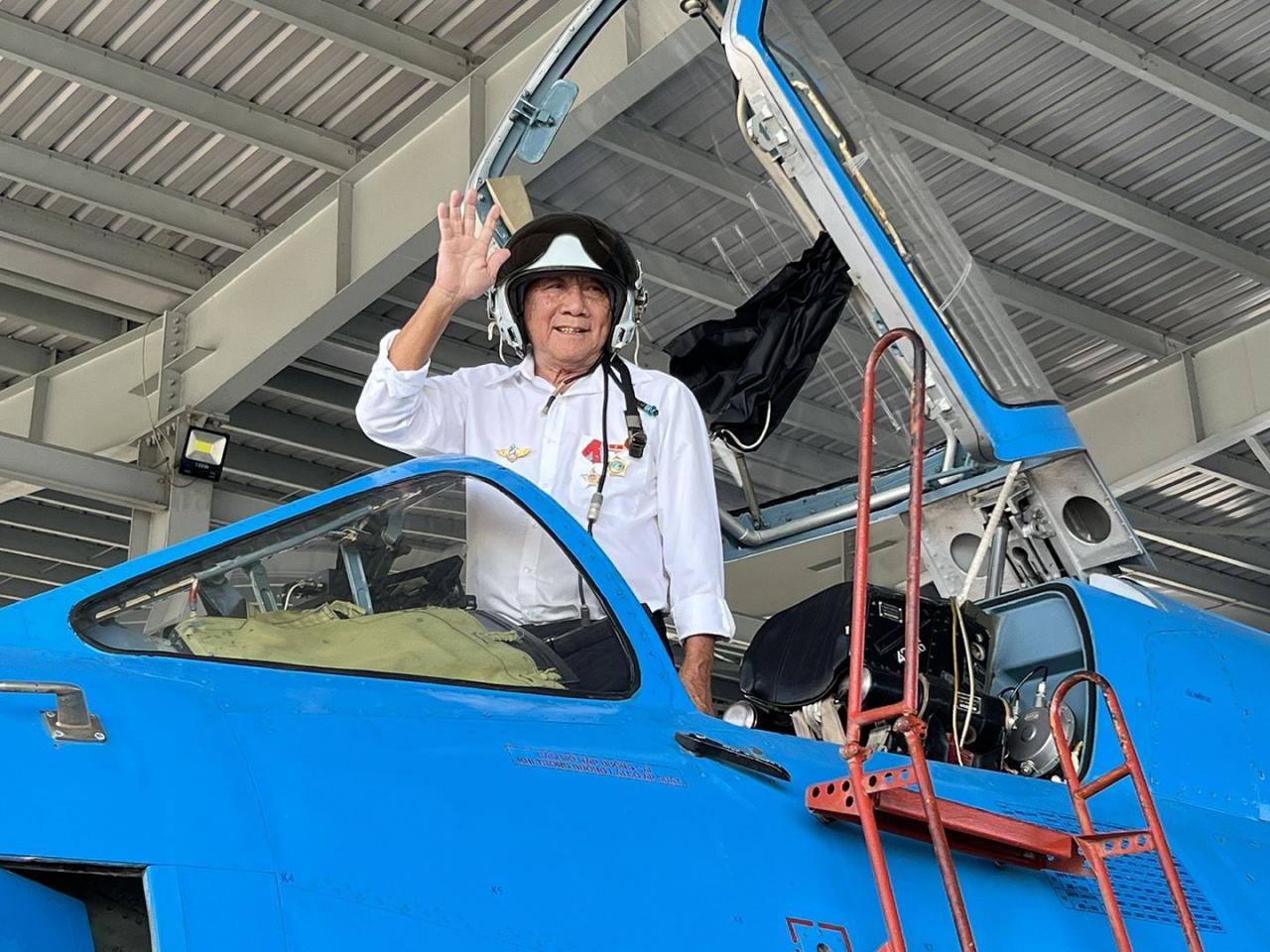
Mr. Tran Van On.
Mr. Tran Van On said: “I really appreciate the words of Commander Le Van Tri about not bombing the Tan Son Nhat runway. He said: We will fight to shock the American army, make them panic and retreat. Therefore, we must leave the runway intact for them to retreat, otherwise the war will be prolonged and casualties will be great.”
We asked, when you received the mission, did you have any worries or concerns? Mr. Luc laughed: “You mean are you afraid of death? Everyone is afraid of death. But if you know when and why you will die, you will face it calmly. I still have a photo of Commander Le Van Tri, after assigning the mission to the Squadron, sitting and playing chess with me until the order to launch. We were so relaxed!”
Mr. Quang added: “The battlefield urged us. Our superiors encouraged us by joking: Comrades, try your best. If you can’t fight, in a few days you can just sit and applaud the friendly units that came to liberate Saigon! Because of those words, we tried even harder.”
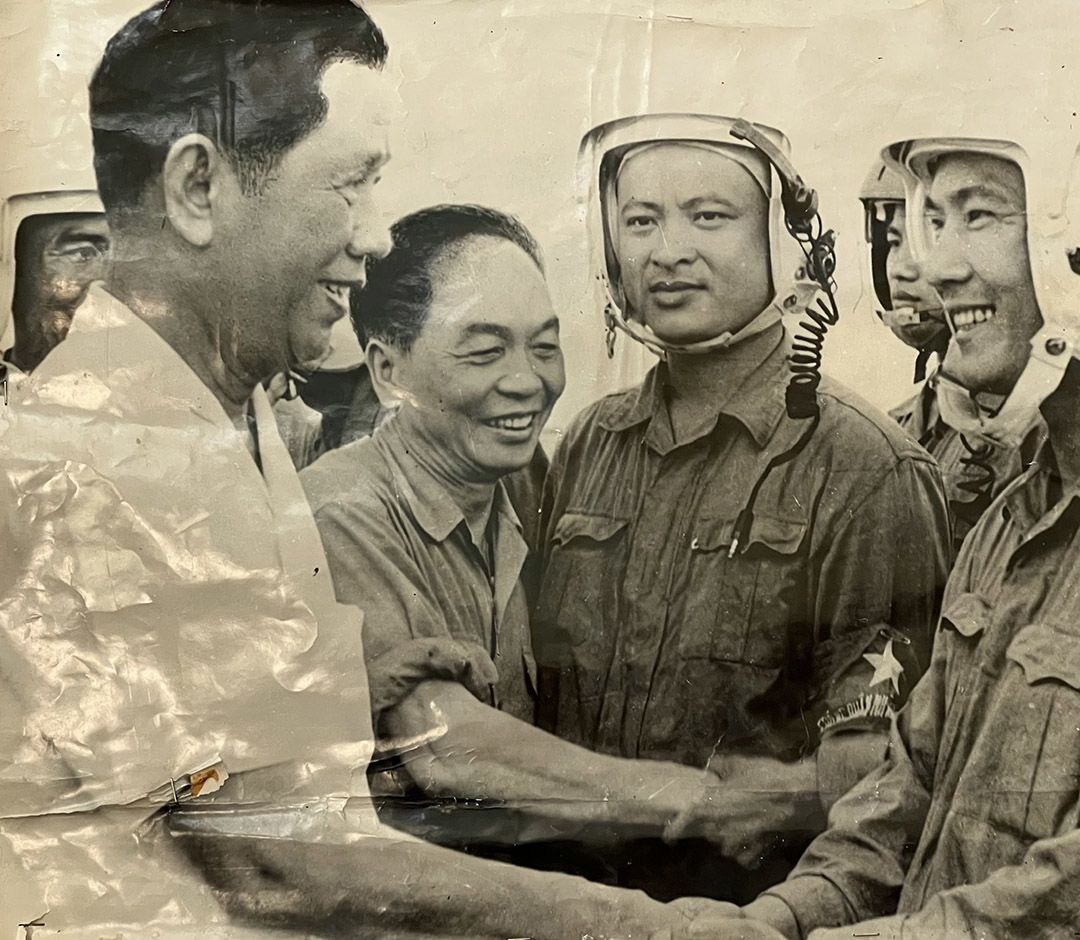
General Secretary Le Duan and General Vo Nguyen Giap visited and praised the Quyet Thang Squadron. From right to left: Han Van Quang, Hoang Mai Vuong.
Standing at the end of the airport, Mr. Han Van Quang pointed: “This is the staging area for A-37 planes with bombs. We sat facing the K4 command post now. We were not allowed to communicate by radio, so the convention was: fire the first flare to start the engine, the second shot to roll onto the runway and the third shot to take off. At 4:17 p.m. on April 28, the squadron took off. In the air, we gathered in formation, circled towards the sea, and headed towards Saigon.”
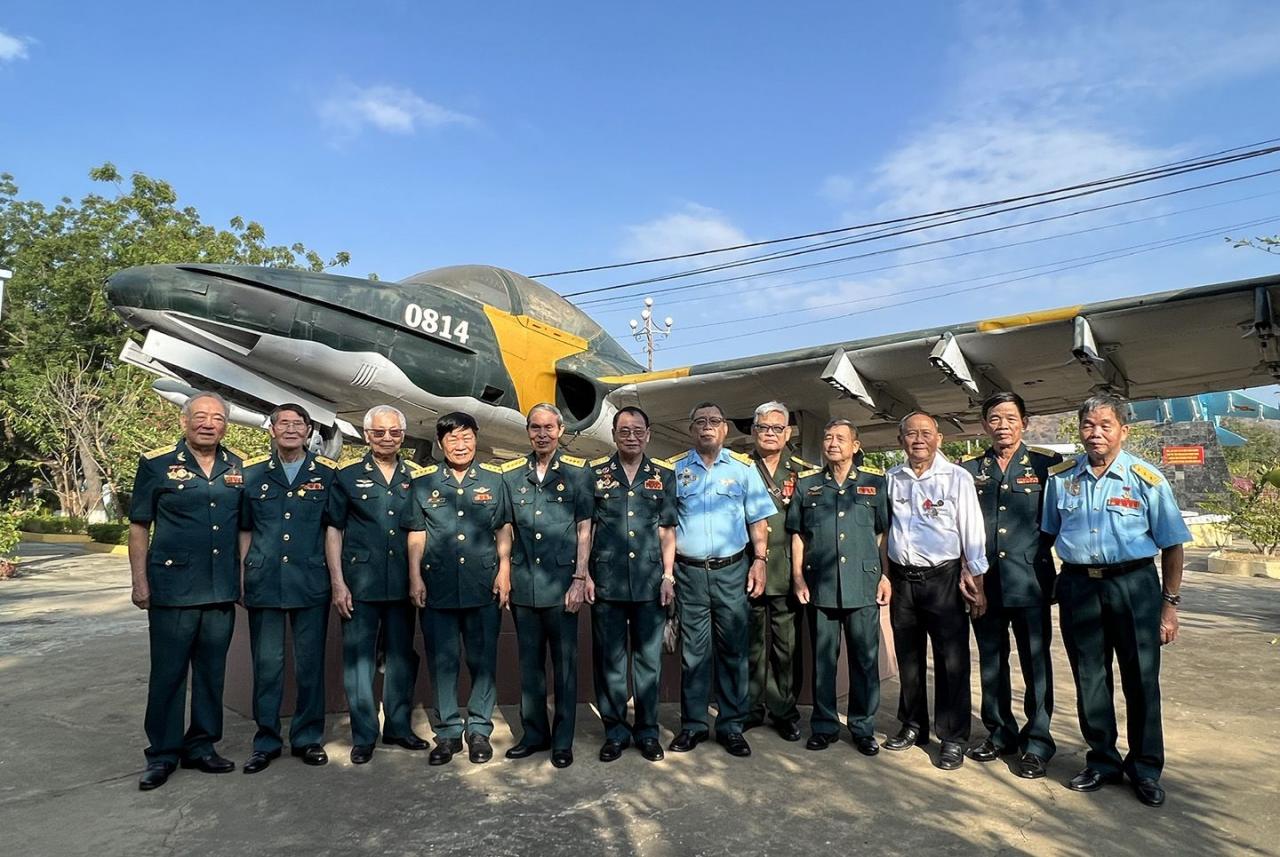
Members of the Quyết Thắng Squadron and those who served with the squadron during the battle of Tan Son Nhat.
Number 1 leading the way was Nguyen Thanh Trung (before transferring to another career, he was a colonel, Hero of the People's Armed Forces); not long before, on April 8, 1975, he flew an F-5E to bomb the Independence Palace. Number 2 was Tu De (colonel, Hero of the People's Armed Forces), number 3 was Nguyen Van Luc (squad leader), plane number 4 had two pilots Hoang Mai Vuong (died in 1979) and Tran Van On, Han Van Quang flew number 5 as tail-lock. The A-37 was a light bomber, carrying 5 bombs. But this time, each plane only carried 4 bombs, each weighing about 100 kg, to save for carrying an extra fuel tank.
"This victory belongs to all of us"
Hero of the People's Armed Forces Han Van Quang
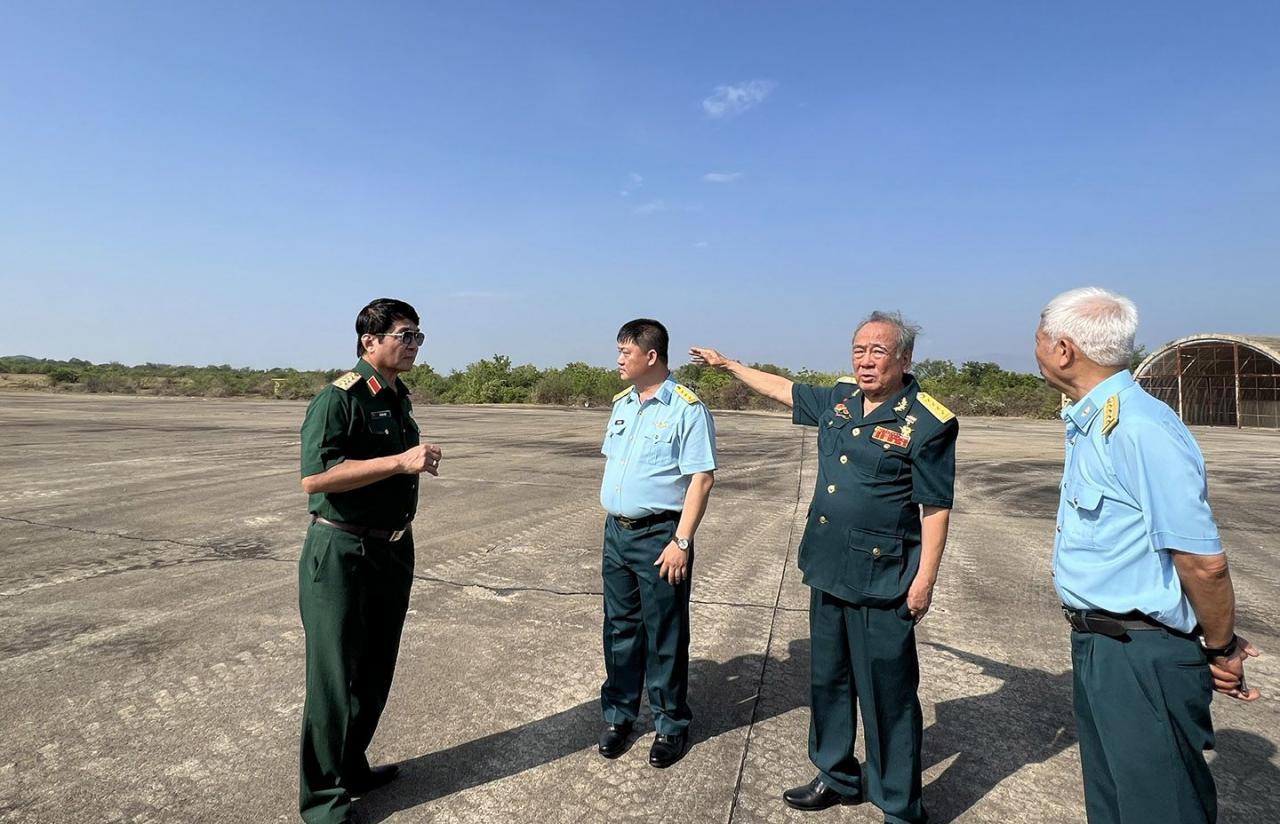
Colonel Han Van Quang pointed out the direction of the squadron's attack on Tan Son Nhat at 4:17 p.m. on April 28, 1975.
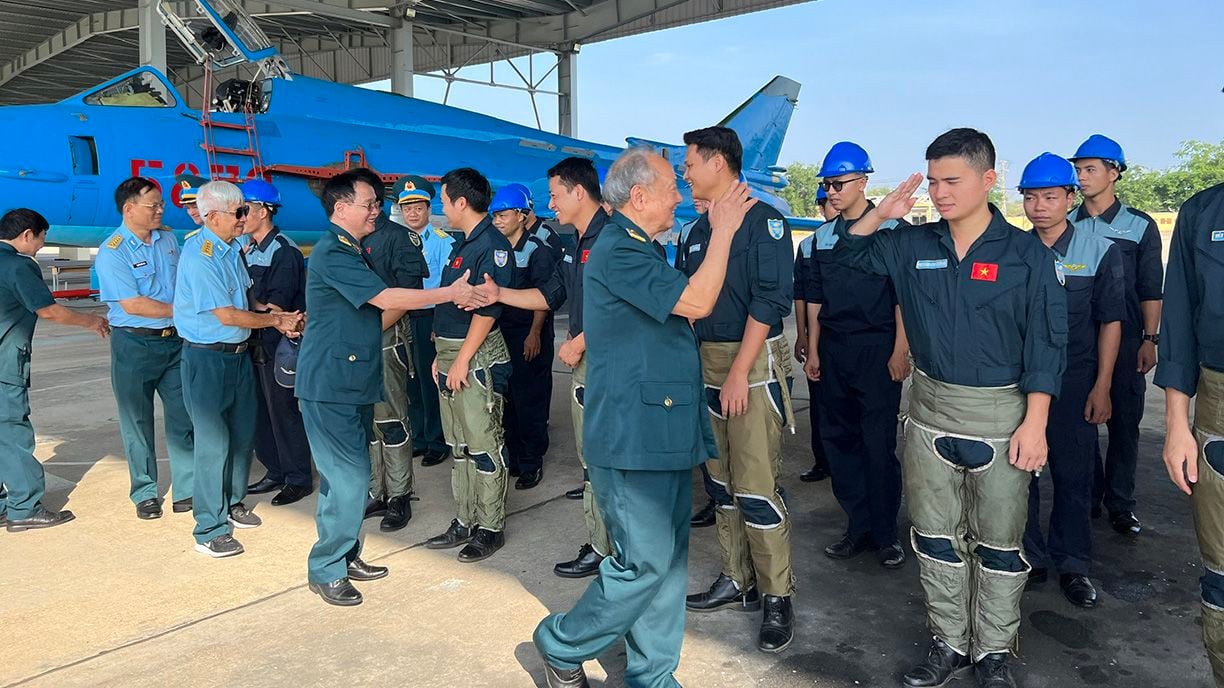
Members of the Quyet Thang Squadron visited and encouraged young pilots on combat duty.
The weather was very bad, so the entire squadron had to fly under the clouds, at an altitude of about 450 to 500 meters, to avoid being detected by enemy radar. That was also one of the reasons why the plane lost fuel faster. Mr. Luc said: "Choosing the take-off time was a wise decision of the Command Board. According to calculations, when we flew to Saigon at about 5 pm, the sky started to get dark, this was also the time when the enemy withdrew to hand over, so we would be subjective."
Mr. Quang continued: “We arrived at the target at about 17 o'clock, so the flight time was about 45-50 minutes. Luckily, the weather in Saigon was very nice at that time, we discovered Tan Son Nhat airport from afar. Following the order from above, we dropped bombs on the taxiway and enemy aircraft area, that is, the area parallel to the runway. We agreed that we could only attack twice, if we circled back and forth many times, there would not be enough fuel to fly back. Mr. Luc dived first, but only cut two bombs. He tried to cut the remaining two bombs again but still failed, probably because the technique was too tight. I, Tu De, On-Vuong cut all four at once. As for Nguyen Thanh Trung, we threw three times, but all four bombs still did not come out, so we asked to throw a fourth time…”.
Below, from the Nha Be fuel depot, the enemy navy had reacted in time, firing fiercely. “I thought to myself, if we waited for Trung to continue, we would not have enough fuel, so I boldly shouted: No. 2, No. 3, No. 4, direction 150, escape! I took the lead of the team. Later I learned that the fourth time, Nguyen Thanh Trung had successfully dropped the bomb in emergency mode. On the way back, he was chased by 2 F-5Es. But perhaps they were on another mission in the air, and were transferred back so they did not have enough fuel, so they only chased Trung to Phan Thiet and then turned around to land in Bien Hoa.”
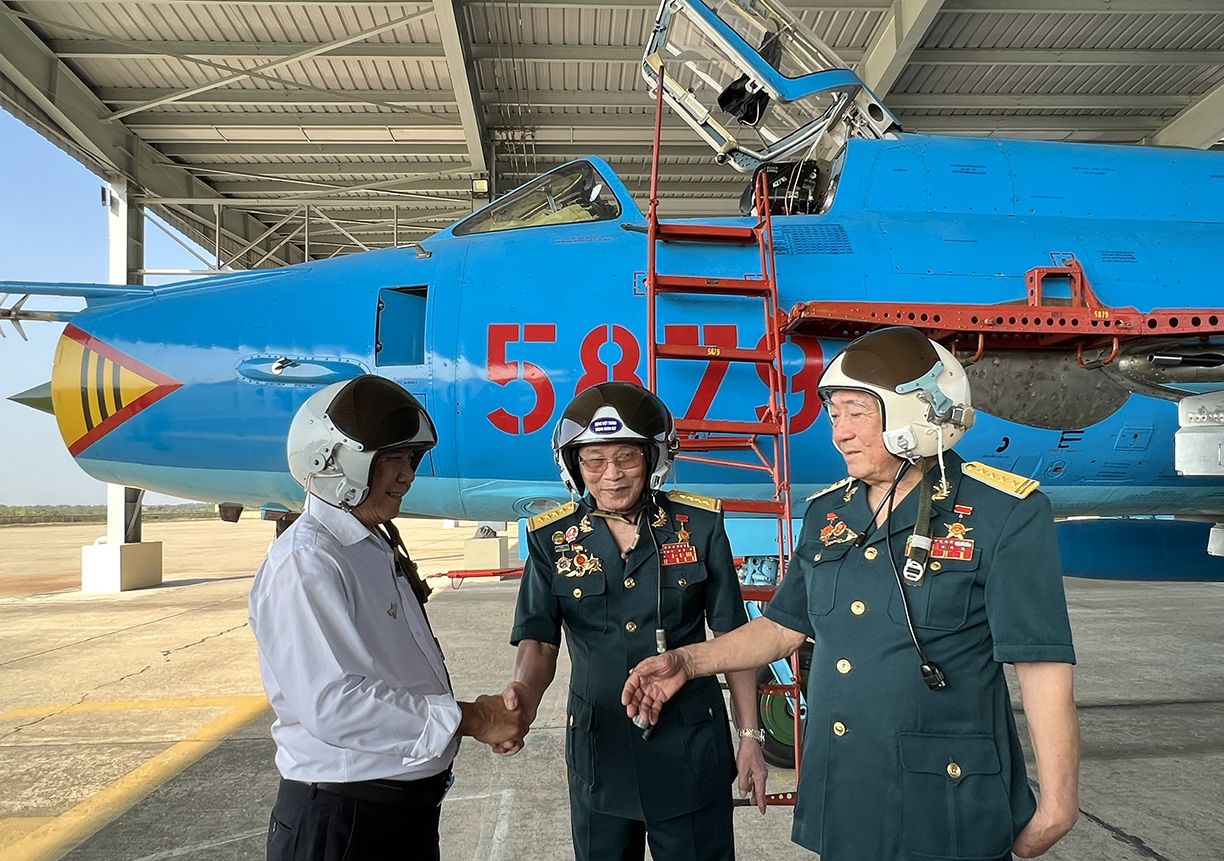
Members of the Quyet Thang Squadron share memories (from right to left: Han Van Quang, Nguyen Van Luc, Tran Van On).
Mr. Quang continued: “About 40km from Thanh Son airport, Mr. Tu De informed that the plane was running out of fuel. I reminded him to turn off one engine to save fuel and land first. When Mr. Tu De's plane dropped to about 1-2 meters in altitude, it stopped and fell heavily on the runway because there was not a drop of fuel left. I told him to take advantage of the momentum and pull the plane to one side. If it stopped in the middle of the runway, the others would not be able to get off!”
Mr. Quang's voice became more urgent: "After Mr. Tu De, it was my turn to land. At an altitude of about 100 meters, I suddenly heard Mr. On shout: "Number 5, let me land first, we're out of fuel!" Looking through the reflective glass, I saw Mr. On's plane was about to fall on my back, so I quickly retracted the landing gear and circled to let him land first. Later, the mechanics who checked said that each plane only had 2-3 buckets of fuel left. If we had to fly for another few minutes, we wouldn't be able to land!"
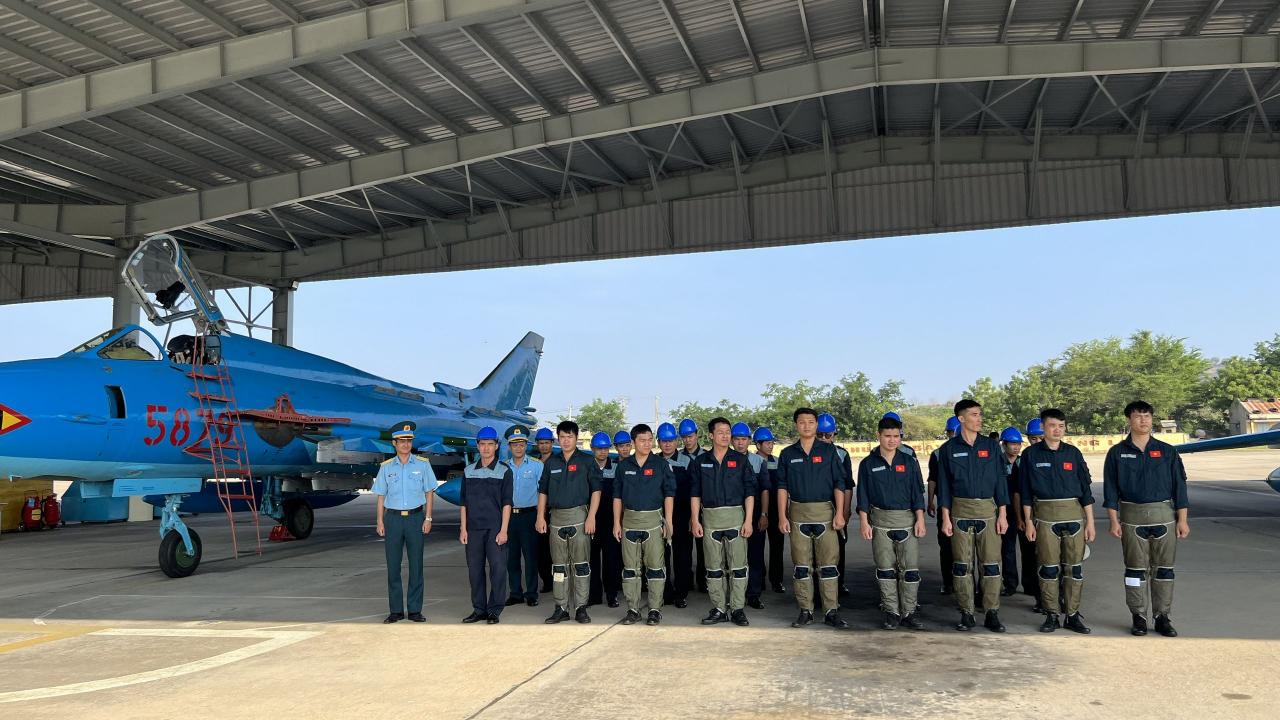
Young pilots of Regiment 937 welcome veterans of Quyet Thang Squadron
Squadron leader Nguyen Van Luc added: “I still had fuel so I continued flying a few circles high up, waiting for everyone to finish landing before getting off. I was the squadron leader.”
“Almost all the commanders, officers and soldiers were waiting for us at the airport. Commander Le Van Tri rushed out to hug and kiss each member of the squadron. He choked up: “You guys made my eyes red waiting!” You should know that in the north, each air battle only lasts about 20-30 minutes. If it lasts longer than that, it is considered a problem. But this time we flew for more than 2 hours before returning. The commander was worried, that’s right” - Mr. Quang laughed heartily.
“The feeling I had at that moment was hard to describe. The happiest thing was that we had won a resounding victory but everyone returned safely. The superiors had directed this battle very closely, boldly and effectively. The technical comrades worked day and night to prepare the best planes for us, creating conditions for us to complete the mission. This victory belongs to all of us.”
The Quyet Thang Squadron's attack on Tan Son Nhat airport 48 years ago was a spectacular battle of the Vietnam Air Force. Using enemy aircraft to attack the enemy surprised them while we kept it absolutely secret. The training and travel time was only 6 days (from April 22 to April 27), but the entire squadron completed the mission excellently, hitting the target, five planes went, five planes returned safely.
The very next day, the enemy had to organize the "Desperanto" campaign to retreat by air.
This is a milestone in the glorious history of the Vietnam People's Air Force.
Senior Lieutenant General Vo Van Tuan emphasized the importance of the victory of the Quyet Thang Squadron.
Senior Lieutenant General Vo Van Tuan, former Commander of the heroic 937th Regiment, had very positive comments about the Quyet Thang Squadron: "It is a historic squadron, born in a historic time, carrying out a historic mission, contributing with other units of our army to liberate the South and unify the country. The Quyet Thang Squadron has excellently completed its mission. No matter how much time passes, this squadron will forever be the Quyet Thang Squadron!".
Production organization: Ngoc Thanh Content and Photos: Huu Viet Presentation: Hanh Vu
Nhandan.vn


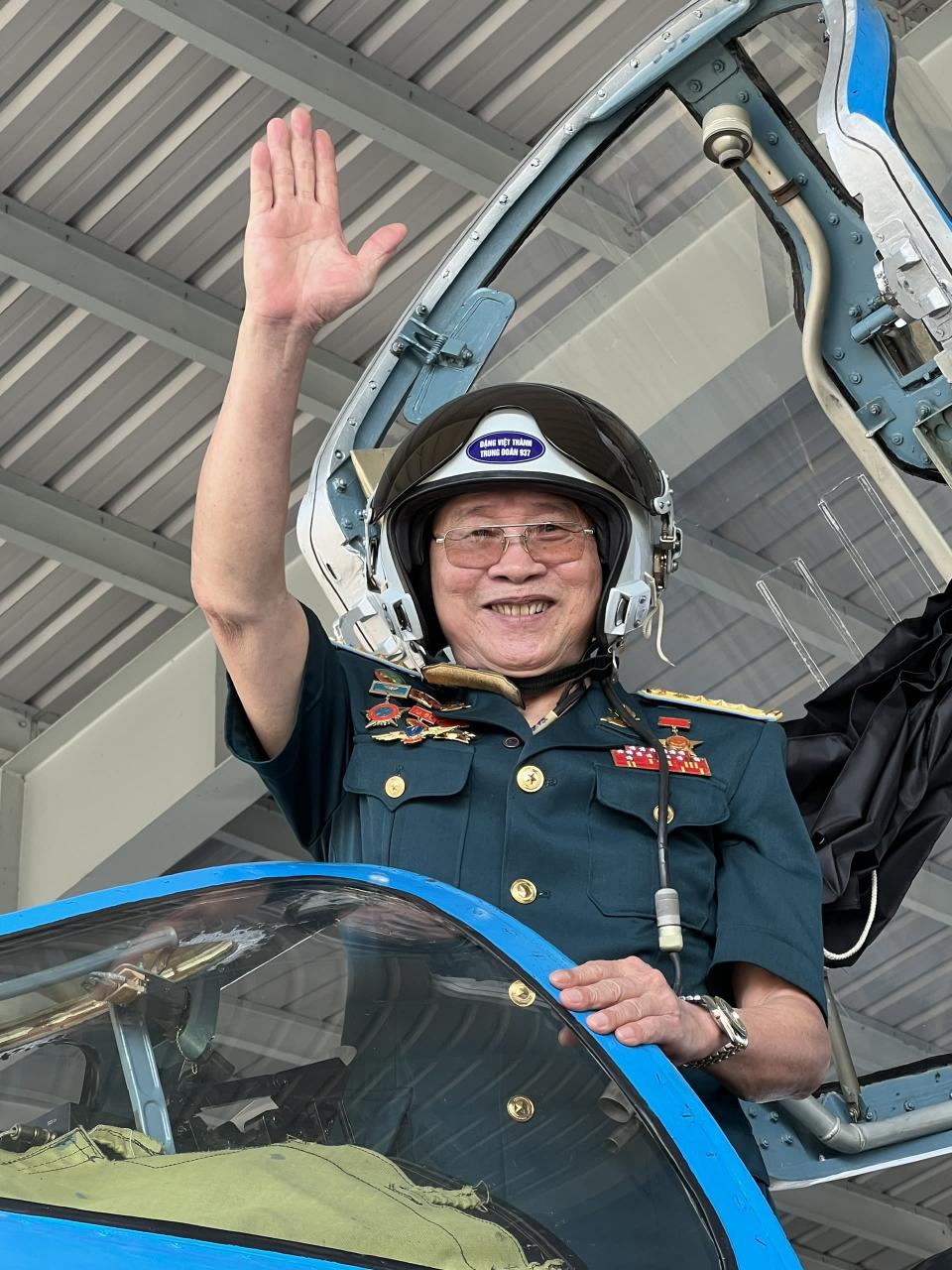
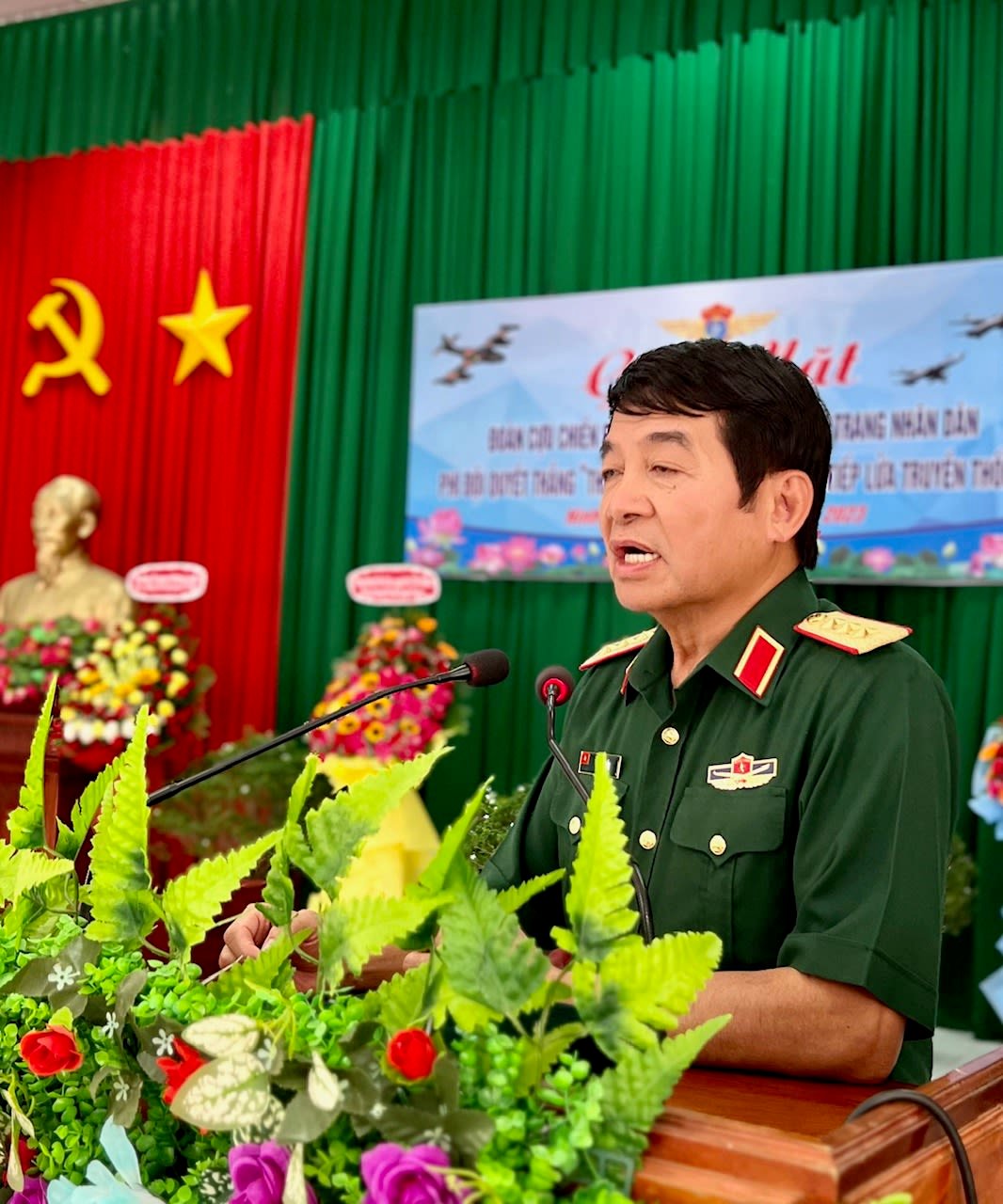


![[Photo] 60th Anniversary of the Founding of the Vietnam Association of Photographic Artists](/_next/image?url=https%3A%2F%2Fvphoto.vietnam.vn%2Fthumb%2F1200x675%2Fvietnam%2Fresource%2FIMAGE%2F2025%2F12%2F05%2F1764935864512_a1-bnd-0841-9740-jpg.webp&w=3840&q=75)


![[Photo] National Assembly Chairman Tran Thanh Man attends the VinFuture 2025 Award Ceremony](/_next/image?url=https%3A%2F%2Fvphoto.vietnam.vn%2Fthumb%2F1200x675%2Fvietnam%2Fresource%2FIMAGE%2F2025%2F12%2F05%2F1764951162416_2628509768338816493-6995-jpg.webp&w=3840&q=75)
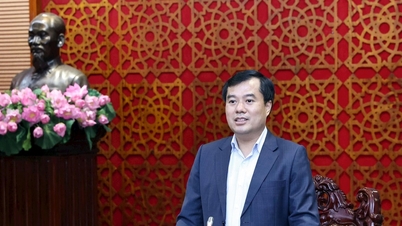

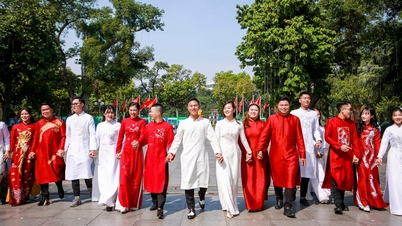

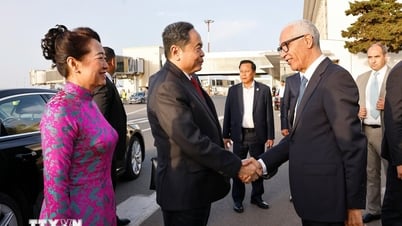

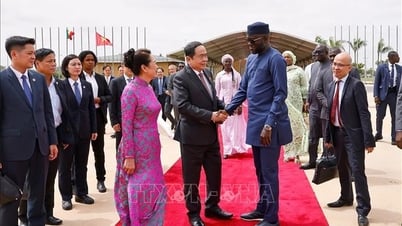

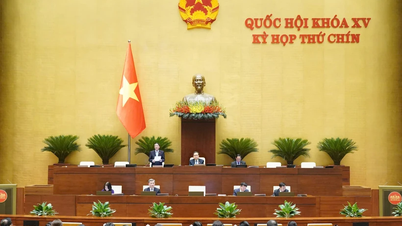
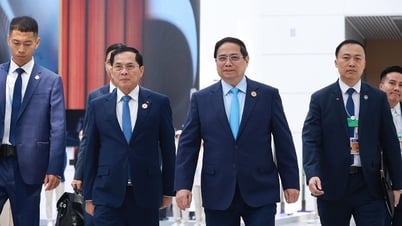







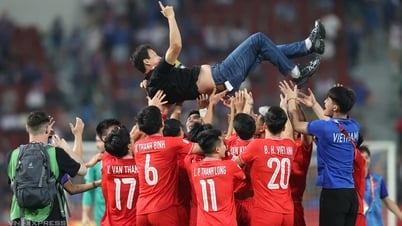
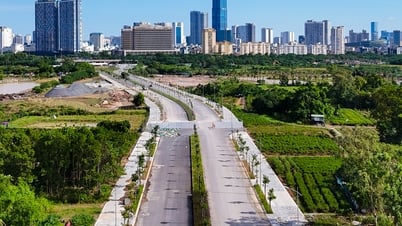

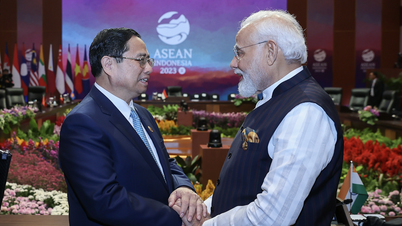

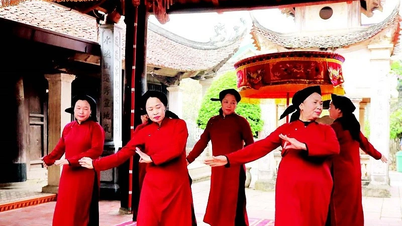
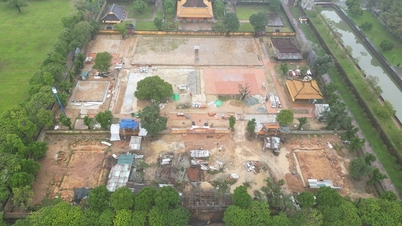

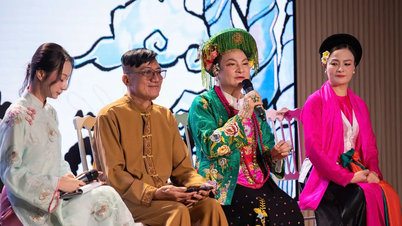



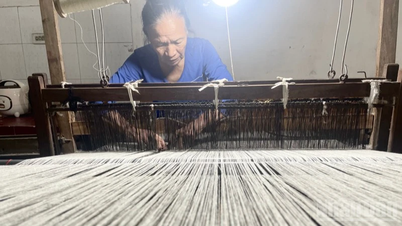
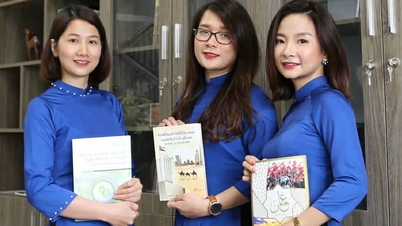

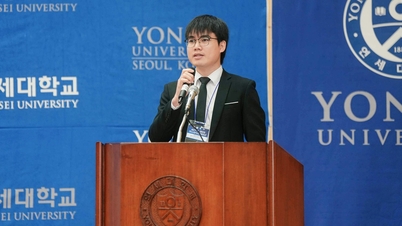
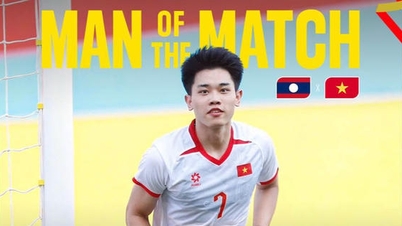










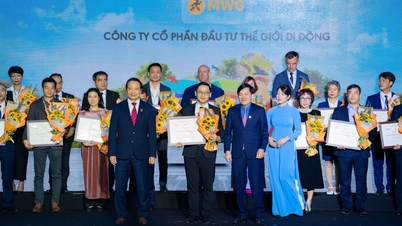
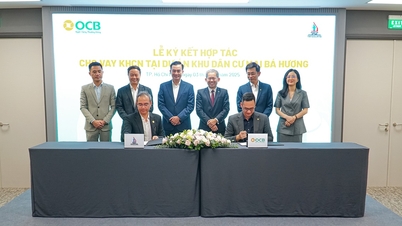
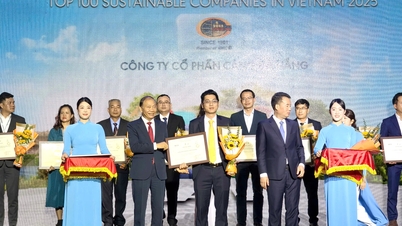
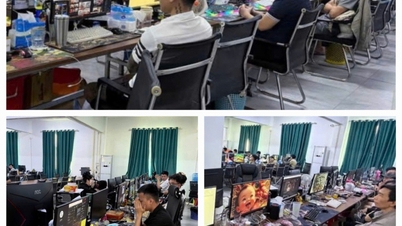






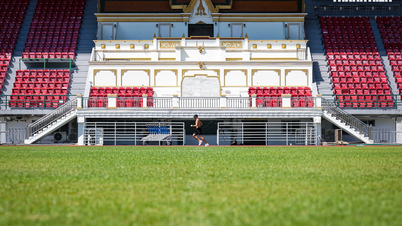

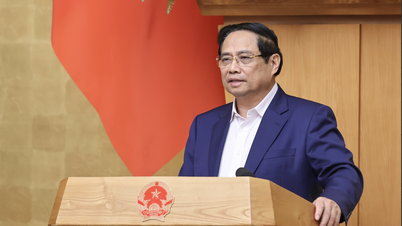

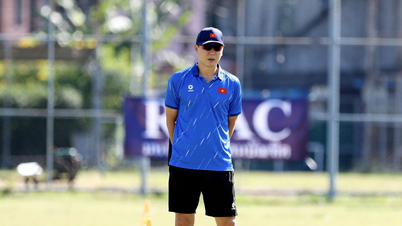
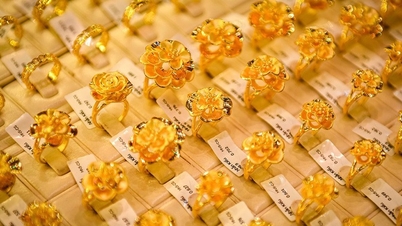
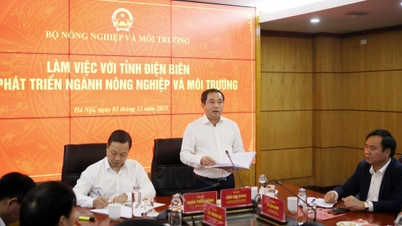

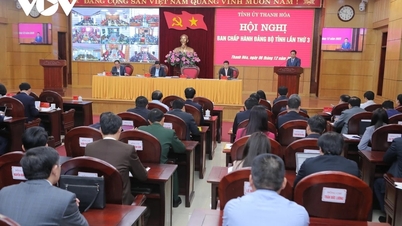





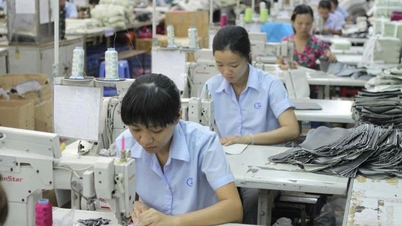
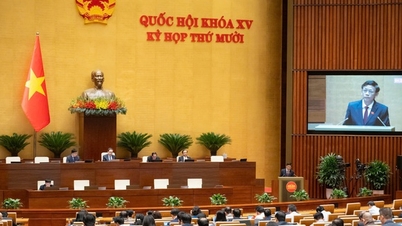
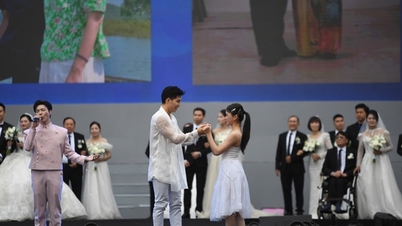
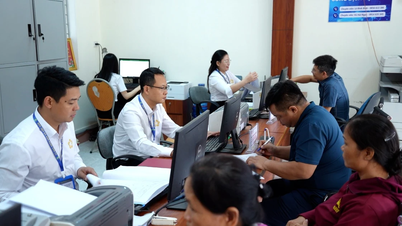

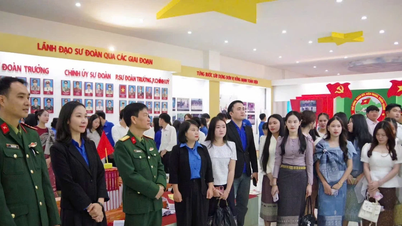


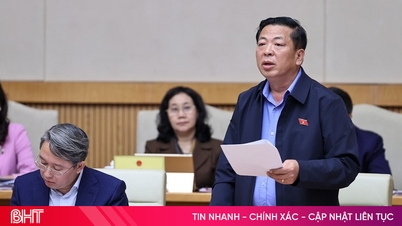


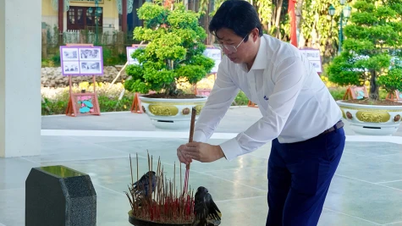











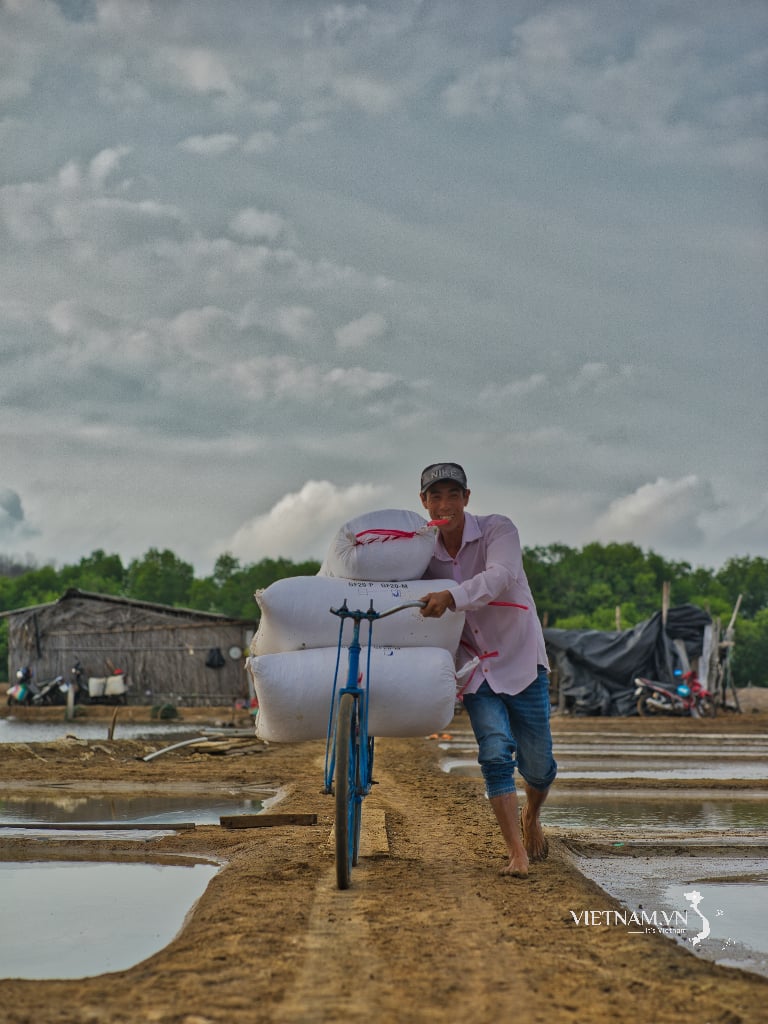
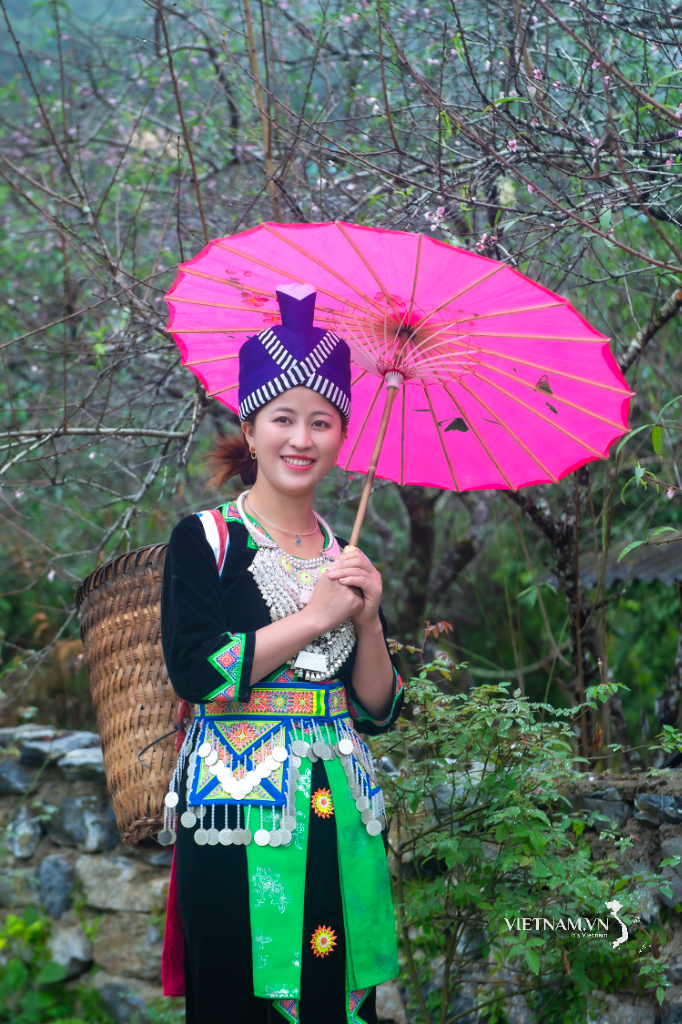
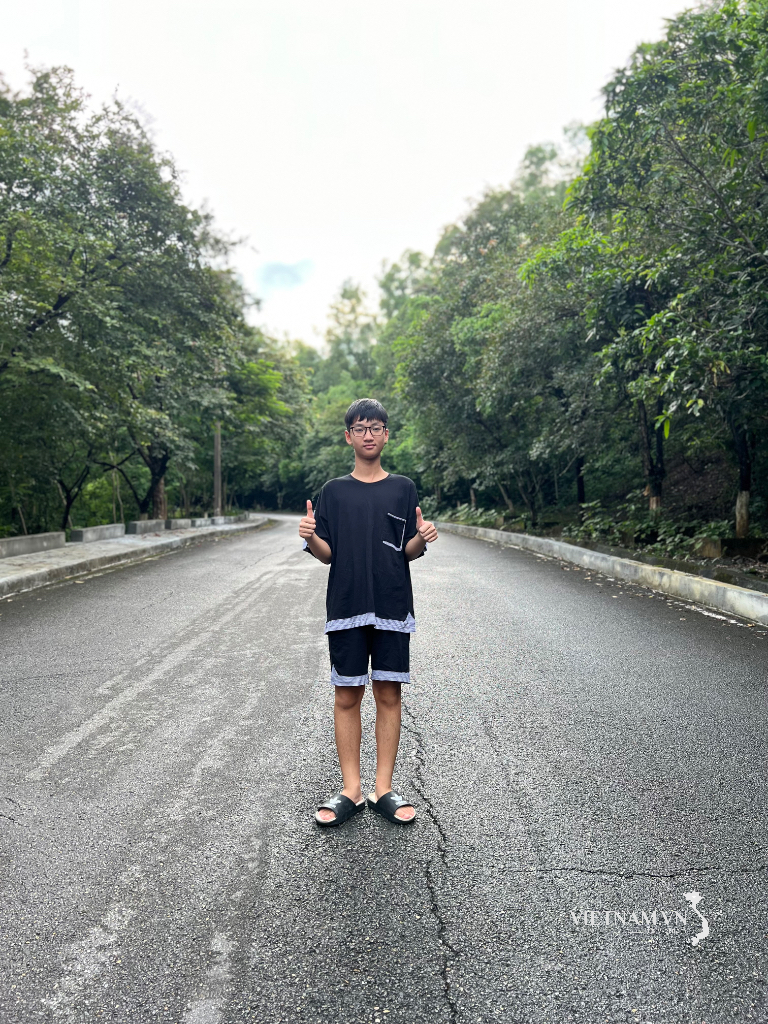




Comment (0)